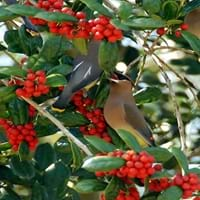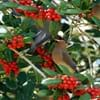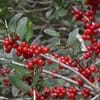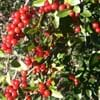Life Span
Perennial
Perennial
Type
Broadleaf Evergreen
Shrub
Origin
China, Korea
Southeastern United States
Types
American & Chinese
Not available
Habitat
Moist Soils, Well Drained
Bluffs, Coastal Regions, Stream side, Woods
USDA Hardiness Zone
6-9
5-9
AHS Heat Zone
Not Available
9-1
Sunset Zone
21,22
Not Available
Habit
Oval or Rounded
Spreading
Flower Color
White
White, Pink
Flower Color Modifier
Bicolor
Bicolor
Leaf Color in Spring
Dark Green
Green
Leaf Color in Summer
Dark Green
Dark Green
Leaf Color in Fall
Dark Green
Lemon yellow, Yellow green
Leaf Color in Winter
Dark Green
Not Available
Leaf Shape
Elliptic
Palmate
Plant Season
Spring, Summer, Fall, Winter
Spring, Summer, Fall
Sunlight
Full Sun, Partial Sun, Partial shade
Full Sun, Partial Sun, Partial shade
Type of Soil
Loam, Sand
Clay, Loam, Sand
The pH of Soil
Acidic, Neutral
Acidic, Neutral, Alkaline
Soil Drainage
Average
Average
Bloom Time
Spring, Late Spring, Early Summer
Summer, Late Summer
Tolerances
Not Available
Salt, Wind
Where to Plant?
Container, Ground, Pot
Ground, Pot
How to Plant?
Seedlings
Cuttings, Seedlings
Plant Maintenance
Medium
Low
Watering Requirements
Requires regular watering
Keep the Soil well drained, Requires regular watering
In Summer
Lots of watering
Lots of watering
In Spring
Moderate
Moderate
In Winter
Average Water
Average Water
Soil pH
Acidic, Neutral
Acidic, Neutral, Alkaline
Soil Type
Loam, Sand
Clay, Loam, Sand
Soil Drainage Capacity
Average
Average
Sun Exposure
Full Sun, Partial Sun, Partial shade
Full Sun, Partial Sun, Partial shade
Pruning
Remove damaged leaves, Remove dead branches, Remove dead leaves
Remove damaged leaves, Remove dead branches, Remove dead flowers, Remove dead leaves
Fertilizers
All-Purpose Liquid Fertilizer
14-14-14 Fertilizer, Apply N-P-K, slow-release fertilizers
Pests and Diseases
holly leaf miner, Scale, Spider mites, Whiteflies
Edema, Powdery mildew, Verticillium Wilt
Plant Tolerance
Drought
Salt, Wind
Flowers
Insignificant
Showy
Flower Petal Number
Single
Single
Foliage Texture
Medium
Coarse
Foliage Sheen
Glossy
Matte
Attracts
Birds
Butterflies, Hummingbirds
Allergy
Acidic, Diarrhea, gastro-intestinal problems, Nausea, Stomach pain, Toxic, Vomiting
Pollen
Aesthetic Uses
Ornamental use
Cottage Garden, Showy Purposes
Beauty Benefits
Not Available
Not Available
Environmental Uses
Air purification
Air purification, Wildlife
Medicinal Uses
No Medicinal Use
Antirheumatic, Colic, constipation, Piles
Part of Plant Used
Not Available
Seeds
Other Uses
Grown in botanical gardens as a specimen
Used for making soaps
Used As Indoor Plant
Sometimes
No
Used As Outdoor Plant
Yes
Yes
Garden Design
Cutflower, Feature Plant, Foundation, Hedges, Mixed Border, Screening, Wind Break
Feature Plant, Foundation, Screening, Wind Break
Botanical Name
ILEX cornuta 'Burfordii'
AESCULUS parviflora
Common Name
Burford holly
bottlebrush buckeye, dwarf horse chestnut
In Hindi
Burford Holly Plant
Bottlebrush Buckeye
In German
Burford Holly Pflanze
Buckeye Putzer
In French
Burford houx Plante
Bottlebrush Buckeye
In Spanish
Planta del acebo Burford
bottlebrush Buckeye
In Greek
Burford Holly Φυτών
bottlebrush Buckeye
In Portuguese
Burford Planta Holly
Bottlebrush Buckeye
In Polish
Burford Holly roślin
Bottlebrush Buckeye
In Latin
Planta Burford Holly
bottlebrush Buckeye
Phylum
Magnoliophyta
Magnoliophyta
Class
Magnoliopsida
Magnoliopsida
Order
Celastrales
Sapindales
Family
Aquifoliaceae
Hippocastanaceae
Clade
Angiosperms, Asterids, Eudicots
Angiosperms, Eudicots, Rosids
Tribe
Not Available
Not Available
Subfamily
Not Available
Hippocastanoideae
Properties of Burford Holly and Bottlebrush Buckeye
Wondering what are the properties of Burford Holly and Bottlebrush Buckeye? We provide you with everything About Burford Holly and Bottlebrush Buckeye. Burford Holly has thorns and Bottlebrush Buckeye doesn't have thorns. Also Burford Holly does not have fragrant flowers. Burford Holly has allergic reactions like Acidic, Diarrhea, gastro-intestinal problems, Nausea, Stomach pain, Toxic and Vomiting and Bottlebrush Buckeye has allergic reactions like Acidic, Diarrhea, gastro-intestinal problems, Nausea, Stomach pain, Toxic and Vomiting. Compare all the properties and characteristics of these two plants. Find out which of these plant can be used as indoor plant. If you are interested to decorate your house and garden, find out aesthetic uses, compare them and select the plant which will beautify your surrounding. Along with beautification, try comparing medicinal and edible uses of Burford Holly and Bottlebrush Buckeye and you can choose the plant having best and most benefits.
Season and Care of Burford Holly and Bottlebrush Buckeye
Season and care of Burford Holly and Bottlebrush Buckeye is important to know. While considering everything about Burford Holly and Bottlebrush Buckeye Care, growing season is an essential factor. Burford Holly season is Spring, Summer, Fall and Winter and Bottlebrush Buckeye season is Spring, Summer, Fall and Winter. The type of soil for Burford Holly is Loam, Sand and for Bottlebrush Buckeye is Clay, Loam, Sand while the PH of soil for Burford Holly is Acidic, Neutral and for Bottlebrush Buckeye is Acidic, Neutral, Alkaline.
Burford Holly and Bottlebrush Buckeye Physical Information
Burford Holly and Bottlebrush Buckeye physical information is very important for comparison. Burford Holly height is 240.00 cm and width 240.00 cm whereas Bottlebrush Buckeye height is 180.00 cm and width 180.00 cm. The color specification of Burford Holly and Bottlebrush Buckeye are as follows:
Burford Holly flower color: White
Burford Holly leaf color: Dark Green
Bottlebrush Buckeye flower color: White and Pink
- Bottlebrush Buckeye leaf color: Green
Care of Burford Holly and Bottlebrush Buckeye
Care of Burford Holly and Bottlebrush Buckeye include pruning, fertilizers, watering etc. Burford Holly pruning is done Remove damaged leaves, Remove dead branches and Remove dead leaves and Bottlebrush Buckeye pruning is done Remove damaged leaves, Remove dead branches, Remove dead flowers and Remove dead leaves. In summer Burford Holly needs Lots of watering and in winter, it needs Average Water. Whereas, in summer Bottlebrush Buckeye needs Lots of watering and in winter, it needs Average Water.





